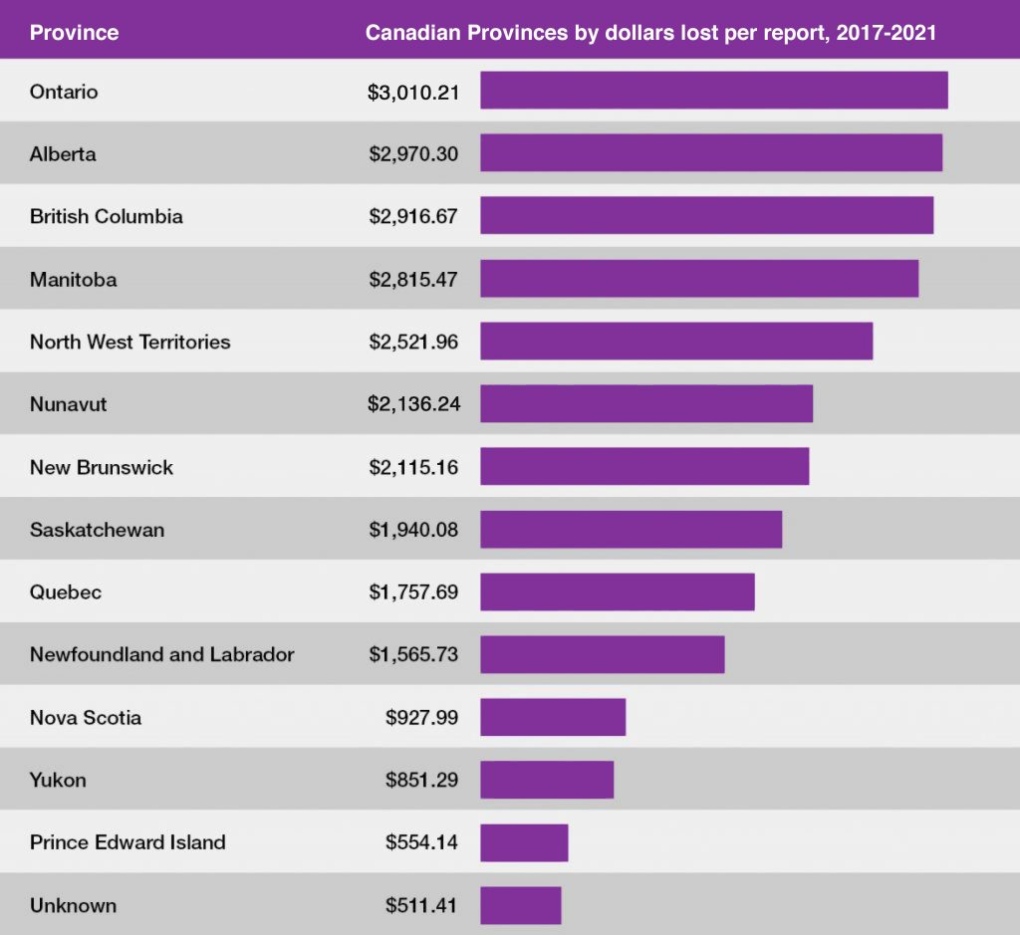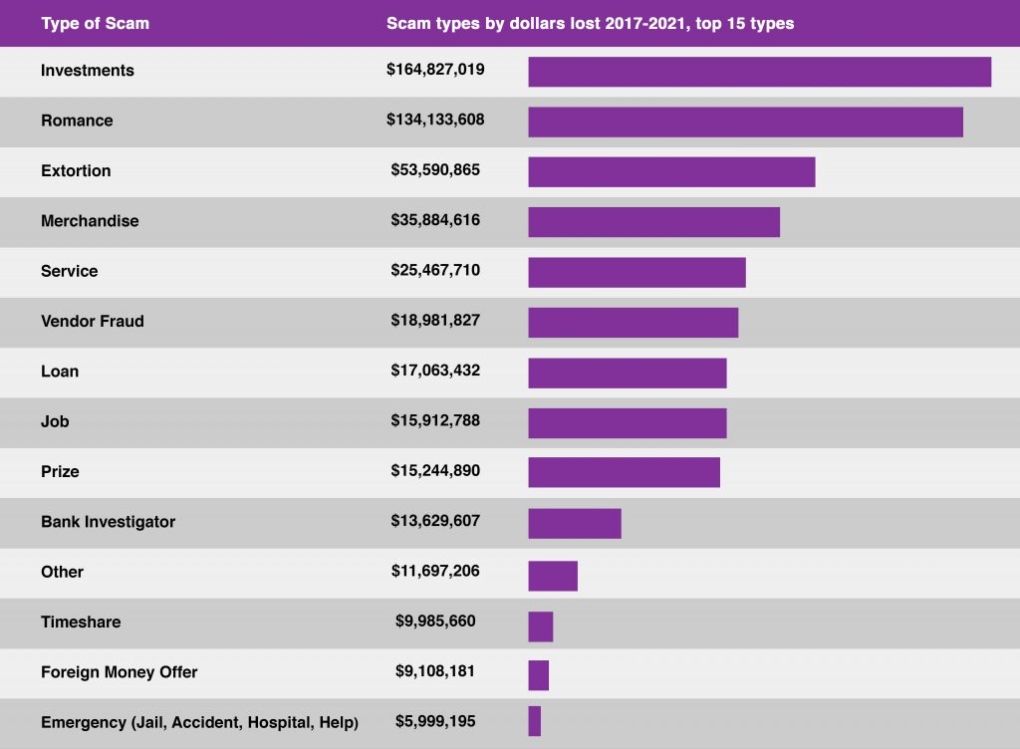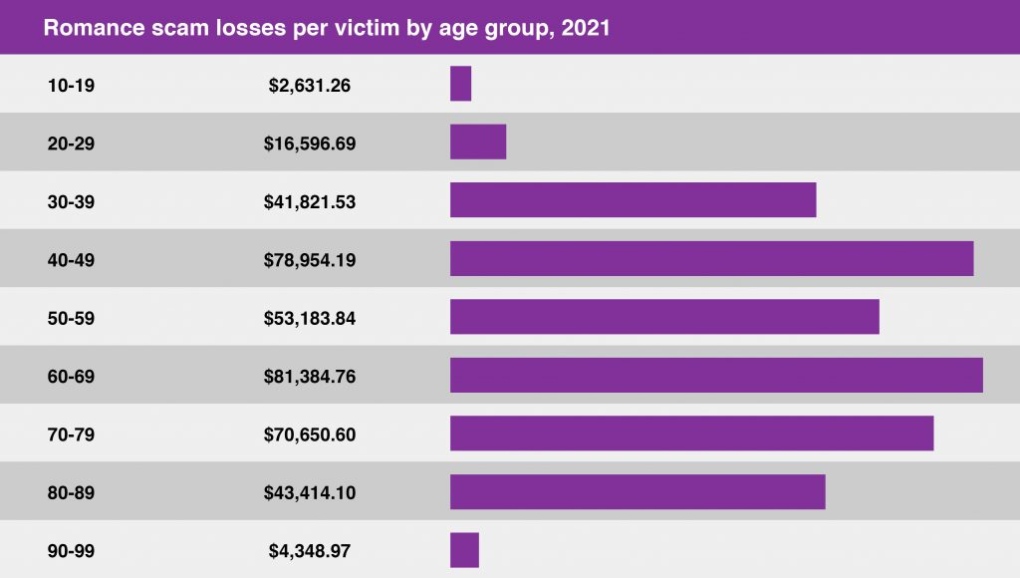How much money B.C. scam victims lose on average, compared to others
 (Shutterstock)
(Shutterstock)
British Columbians are among those who lose the most money on average to scams.
A just-published study suggests that victims in B.C. lose an average of about $3,000 – a similar sum to what's seen in Ontario and Alberta.
According to the study from Social Catfish, which used data from the Canadian Anti-Fraud Centre collected over the last five years, B.C. victims lose the third-most amount of money on average.
That average, the group said, is $2,916.67, down slightly from the $3,010.21 Ontarians lose, and from $2,970.30 in Alberta.
The province or territory where victims have lost the least amount of money is Prince Edward Island, where the average is $554.14.
The study did not suggest that means residents of those provinces are more or less tech-savvy, and when it comes to reported complaints, B.C. was sixth.
According to Social Catfish, the rate of CAFC complaints in B.C. is 249 per 100,000 residents. Manitoba actually had the highest rate of reported scam victims, followed by Ontario and Yukon.
 (Social Catfish)
(Social Catfish)
DETAILS AND ADVICE
As for how fraudsters are tricking their victims, the most common scam in Canada involves investment. Canadians lost a whopping $165 million between 2017 and 2021 to opportunities billed as once-in-a-lifetime, can't-miss deals.
These scams are often sent by email or social media, and promise a high rate of return for little risk. The would-be investor transfers money, then never sees it again.
Often these scams involve cryptocurrency such as Bitcoin.
As for how to avoid falling for it, experts advise those approached to research the person or company, and consult a third-party financial advisor.
The second most-costly scams prey on a different emotion: love.
Canadians lost $134 million to romance scams in the five-year period involved in the study. Scammers involved in these will use social media or dating apps to approach their victims and earn their trust, then start faking emergencies.
They ask for money, get as much as they can from the target, then disappear.
To protect yourself, experts advise, refuse to give money to anyone not willing to meet in person or use video chat.
Another tip is to save the photo or photos the person is using and run them through a reverse image search, to see if the photos are their own. To do this, go to Google Images in a web browser and upload the image or images by clicking the camera icon in the search bar, then look through the results.
And another $54 million was lost during the same period to extortion scams. These include emails and phone calls from "police" or similar agencies accusing the target of serious criminal offences.
Scammers will tell the victim to respond to a fake email address if they want to avoid jail time, then ask for money and other personal information.
Police and other law enforcement agencies will never demand cash or threaten to make an arrest by phone or email, so potential victims can be confident that these approaches are fake.
 (Social Catfish)
(Social Catfish)
WHO ARE THE VICTIMS?
According to the study, the most vulnerable age group is 60 to 69.
In a breakdown of dollars lost by age group to romance scams specifically, this was still true, but people between the ages of 40 and 59, as well as 70 to 79, also lost significant amounts of money, and people in their 30s and 80s were not that far behind.
The average loss by all Canadians to these scams was about $54,000, but some were more likely than others.
Based on CAFC data, victims under 20 lost an average of $2,631.26, and victims over 90 lost $4,348.97.
Victims in their 60s lost the most, at $81,384.76, followed by people in their 40s who were scammed out of nearly $79,000.
According to the CAFC, there had been 29,294 reports of all types of fraud involving 18,609 victims this year, as of the end of April. Those victims lost approximately $163.9 million.
 (Social Catfish)
(Social Catfish)
CTVNews.ca Top Stories

Young people 'tortured' if stolen vehicle operations fail, Montreal police tell MPs
One day after a Montreal police officer fired gunshots at a suspect in a stolen vehicle, senior officers were telling parliamentarians that organized crime groups are recruiting people as young as 15 in the city to steal cars so that they can be shipped overseas.
'It was joy': Trapped B.C. orca calf eats seal meat, putting rescue on hold
A rescue operation for an orca calf trapped in a remote tidal lagoon off Vancouver Island has been put on hold after it started eating seal meat thrown in the water for what is believed to be the first time.
Man sets self on fire outside New York court where Trump trial underway
A man set himself on fire on Friday outside the New York courthouse where Donald Trump's historic hush-money trial was taking place as jury selection wrapped up, but officials said he did not appear to have been targeting Trump.
Sask. father found guilty of withholding daughter to prevent her from getting COVID-19 vaccine
Michael Gordon Jackson, a Saskatchewan man accused of abducting his daughter to prevent her from getting a COVID-19 vaccine, has been found guilty for contravention of a custody order.
Mandisa, Grammy award-winning 'American Idol' alum, dead at 47
Soulful gospel artist Mandisa, a Grammy-winning singer who got her start as a contestant on 'American Idol' in 2006, has died, according to a statement on her verified social media. She was 47.
She set out to find a husband in a year. Then she matched with a guy on a dating app on the other side of the world
Scottish comedian Samantha Hannah was working on a comedy show about finding a husband when Toby Hunter came into her life. What happened next surprised them both.
B.C. judge orders shared dog custody for exes who both 'clearly love Stella'
In a first-of-its-kind ruling, a B.C. judge has awarded a former couple joint custody of their dog.
Saskatoon police to search landfill for remains of woman missing since 2020
Saskatoon police say they will begin searching the city’s landfill for the remains of Mackenzie Lee Trottier, who has been missing for more than three years.
Shivering for health: The myths and truths of ice baths explained
In a climate of social media-endorsed wellness rituals, plunging into cold water has promised to aid muscle recovery, enhance mental health and support immune system function. But the evidence of such benefits sits on thin ice, according to researchers.































